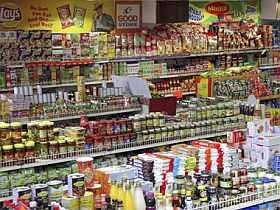Consumer goods companies remain hopeful of good rainfall this year despite the prediction of a possible drought-causing El Niño weather phenomenon in August-September. India was last hit by an El Niño, caused when there is a shift in ocean temperatures and atmospheric conditions in the Pacific Ocean, in 2009. The last two years were good in terms of rains for India, with the kharif crop output rising 10 per cent and nearly four per cent, respectively.
India was last hit by an El Niño, caused when there is a shift in ocean temperatures and atmospheric conditions in the Pacific Ocean, in 2009. The last two years were good in terms of rains for India, with the kharif crop output rising 10 per cent and nearly four per cent, respectively.
"Weather reports suggest the rainfall this year will be good. We remain hopeful it will," says Adi Godrej, chairman, Godrej Group. "Our assessment is that there will be no negative impact as a result of weak rains. In our view, the monsoons will be good," says Naresh Bhansali, chief executive officer, finance, strategy & business development, Emami Ltd.
C K Ranganathan, chairman & managing director, CavinKare, says, "We subscribe to weather forecast reports ourselves and what we are seeing suggests the monsoons this year will not be weak. We are keeping our fingers crossed."
A good monsoon benefits fast moving consumer goods (FMCG) companies in many ways. Chiefly, it helps increase farm output, which takes up income, impacting sales. About 30-40 per cent of FMCG sales come from rural areas.
Most companies are looking to take this number up, as urban areas, which constitute 60-70 per cent sales, are seeing a slower rate of growth, according to analysts.
"A good monsoon," says Abneesh Roy, associate director, research, Edelweiss Capital, "also helps check agri-commodity
Good rainfall also impacts consumers in general, since food price inflation can be tamed. Today, food constitutes over 50 per cent of the monthly household expenditure of a family in urban as well as rural areas, thanks to runaway inflation.
While headline inflation stood at 7.23 per cent, consumer price inflation, which measures product prices to the end-consumer, was over eight per cent last month. With the fuel price hike this month, both headline and consumer price inflation are likely to go up, say experts.
FMCG companies have been wary of taking up product prices on account of this inflation. In the fourth quarter of the 2011-12 financial year, for instance, while volume growth was nine to 15 per cent for most FMCG companies, price-led growth was five to 10 per cent only.
The trend was no different for the first three quarters of the 2011-12 year, with price-led growth in the region of five to 10 per cent, as companies focused on volumes. Analysts say a good rainfall this year will be critical in keeping this volume-sales momentum going.
"A good and normal monsoon is favourable for FMCG," says Anand Ramanathan, associate director, KPMG Advisory.
"A drought has a cascading effect on account of a decrease in the consumer's ability to pay, especially in rural areas, as well as supply-side bottlenecks in procurement of commodities by FMCG companies."













 © 2025
© 2025